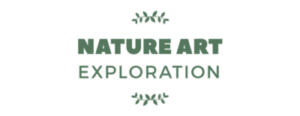“Just when the caterpillar thought the world was over, it turned into a butterfly.” –Anonymous
Every spring my son and I have fun exploring life cycles. We have observed tadpoles from our pond from egg to frog, observed the various pond life under the microscope, raised baby Lionhead rabbits, and raised Monarch butterflies from egg to release. We have also had fun exploring the life cycles of plants and expanded the plants, trees, and mushrooms that we know every year. For the past two years we have raised Monarch butterflies collecting eggs on Common Milkweed in our yard and properly rearing them to release. This increases their chances of survival from the 10% chance they have in the wild. We have also been involved with a citizen science Monarch tagging project which helps people to learn more about them and their migration including how weather effects them.
This year, my family is excited to start a small butterfly garden project. It will be a small-scale project aimed at providing more butterfly habitat in our yard, and hopefully, it will draw more butterfly diversity. Butterflies and other pollinators are continually threatened with habitat loss, pesticides, and other chemicals. The ways they are being affected by climate change and other environmental threats is not fully known. Giving children the opportunity to care for and develop a relationship with butterflies and other pollinators ensures a next generation who appreciates their importance and places value in their existence. People who were given the opportunity to develop relationships with the natural world as a child are much more likely to serve as stewards of the environment caring for the world they feel connected to, nourished by, and loved.
I love butterflies and am really excited to get a butterfly garden going with some of our favorite native plants! I am especially excited to watch their life cycles and get out there doing nature journaling with my son. Planning your butterfly garden as a family can be a great way to connect, and the final goal of having an established butterfly garden will be great for the butterflies and your family. I find that our gardens are a special place to return to, care for, observe, and feel connected to each other and the earth. It’s a healing place to be for all members of the family and those who visit. Bringing butterflies into the mix makes it extra special! Their beauty and playful nature call us back to connecting with our forgotten, inner child who yearns to remember the wonders of being led by our natural curiosities.
Check out the above posters in Nature Art Exploration’s shop by clicking on the pictures! There are also canvases available for these prints. These are sure to bring nature into any space.
Getting Started with Your Butterfly Garden
Starting a butterfly garden can be a really easy project. A person doesn’t need a lot of space either. If you don’t have an area that you could plant in ground, think about how you could go about container gardening. Take a look at where you want to start your garden and make sure it will be a safe place for your winged friends. If you live in an apartment building, shared complex, or other place where grounds maintenance cares for the property, think about asking them if they use pesticides, herbicides, or other chemicals in their work. Always consider a safe place to draw the butterflies to your yard, and if you can make the pledge to not using these types of chemicals and other products that are harmful to pollinators, great! You want to make sure that your butterfly garden gets between 6-8 hours of full sun and think about protection for the butterflies who will frequent your garden. Having a shrub or other place for the butterflies to seek shelter from the weather is good to think about. It will also give them a place to form their chrysalises.
Planning for the Butterflies of your Region
What types of butterflies live in your area? It’s good to do some research on this subject by doing an internet search or checking out books from your local library. Knowing what butterflies you are planning for will guide you in deciding the native plants for your garden. We will be planting for the Swallowtails and Painted Ladies that frequent our yard. We will also be adding plants for our Monarch friends, even though the environment around our house is already rich in Common Milkweed and nectar plants. Planting milkweed that is native to your area is a grand deed that the Monarchs in your area will thank you for. What butterflies will you choose to plant for? Perhaps, you’ll want to think back to the butterfly visitors you’ve noticed in your yard or other places in your neighborhood. In doing so, think about how you could best accommodate these visitors in your yard. What is your caterpillars’ host plant and what type of flowers will the adults go to for nectar? If you’re from Minnesota, the University of Minnesota Extension has great information to help guide you in this research.
Choosing the Native Plants for your Gardens
Choosing native plants for your garden is a choice that encourages rehabilitation of your back yard towards what the landscape looked like in your area prior to the land alterations of modern society. Know that when you plant native you are encouraging the biodiversity in your area to thrive. The insects, birds, and animals in your area search for these types of plants. They will thank you! Many native plant companies offer butterfly garden seed packs. Make sure that the plants you choose are for your area. If you do choose plants that are not native to this area, make sure you do not introduce anything that is invasive. Invasive plants crowd out native plant habitats and do not provide the type of habitat that critters in your area need. Have fun doing your research! When making your plant considerations, make sure you select plants that will offer leaves and blooms for the caterpillars and adult butterflies supporting their full life cycle. Having season long coverage for their needs is essential. Asking your local native plant provider or reliable seed company for guidance, can be helpful. Know that if you plan to start seeds, most seeds require a process that mimics winter dormancy. This takes time, so plan in advance.
Have Fun Planting
Once the time is right for planting in your area, set a special day to plant your butterfly garden. In arranging the groups of plants, make sure you have room for a puddle that the butterflies can safely drink from. You can use a dish filled with water-soaked sand to provide the water they will need. Re-wet the sand frequently and keep it clean. Placing a few flat rocks in your garden for the butterflies to bask in the sun is also good. Make the garden a welcoming place for your family and visitors. Have fun getting creative! Wild Ones has a great printable to use for reference in planning and planting your butterfly garden. You can find it here. Check out the following books which have great information as you consider creating a butterfly garden. This post contains affiliate links. Thank you for choosing to support Nature Art Exploration!
Thanks for joining Nature Art Exploration in exploring how to create a butterfly garden! I hope you enjoyed the post. Please feel free to share in with your comments below. Nature Art Exploration loves to hear from you.








Hi Sheila! Loved reading your info about creating butterfly gardens. EXCELLENT Job! Looked into what Prairie Moon has to offer for plants. Sent for their catalog so I can get started on adding more plants that will feed the bees & butterflies. You made a very Fun read & it was so informative. THANK YOU !
I’m so glad it inspired you to think about creating a butterfly garden! Providing habitat for the butterflies and bees is so important. Watching your butterfly garden come alive will be so wonderful. Happy upcoming planting!